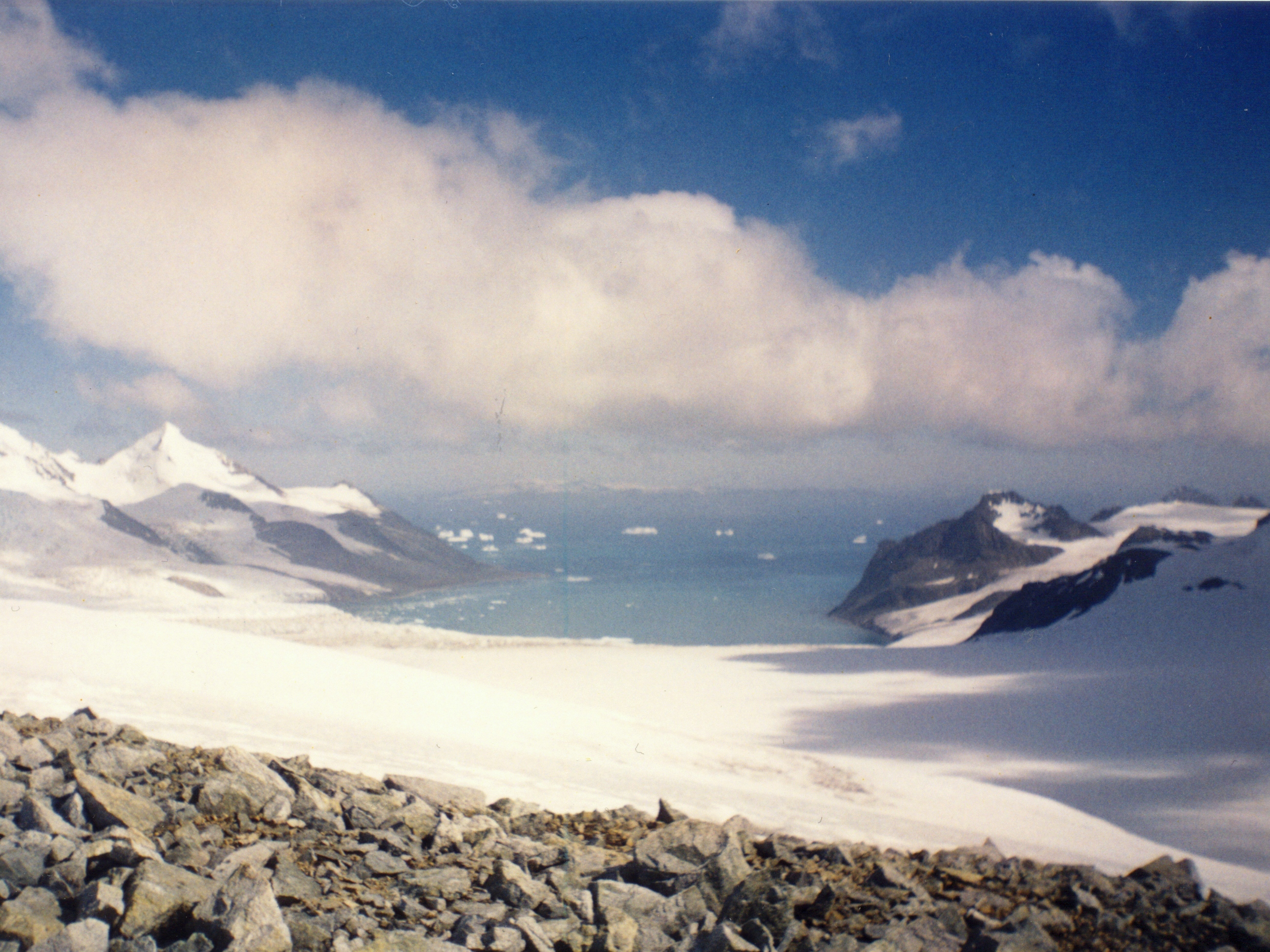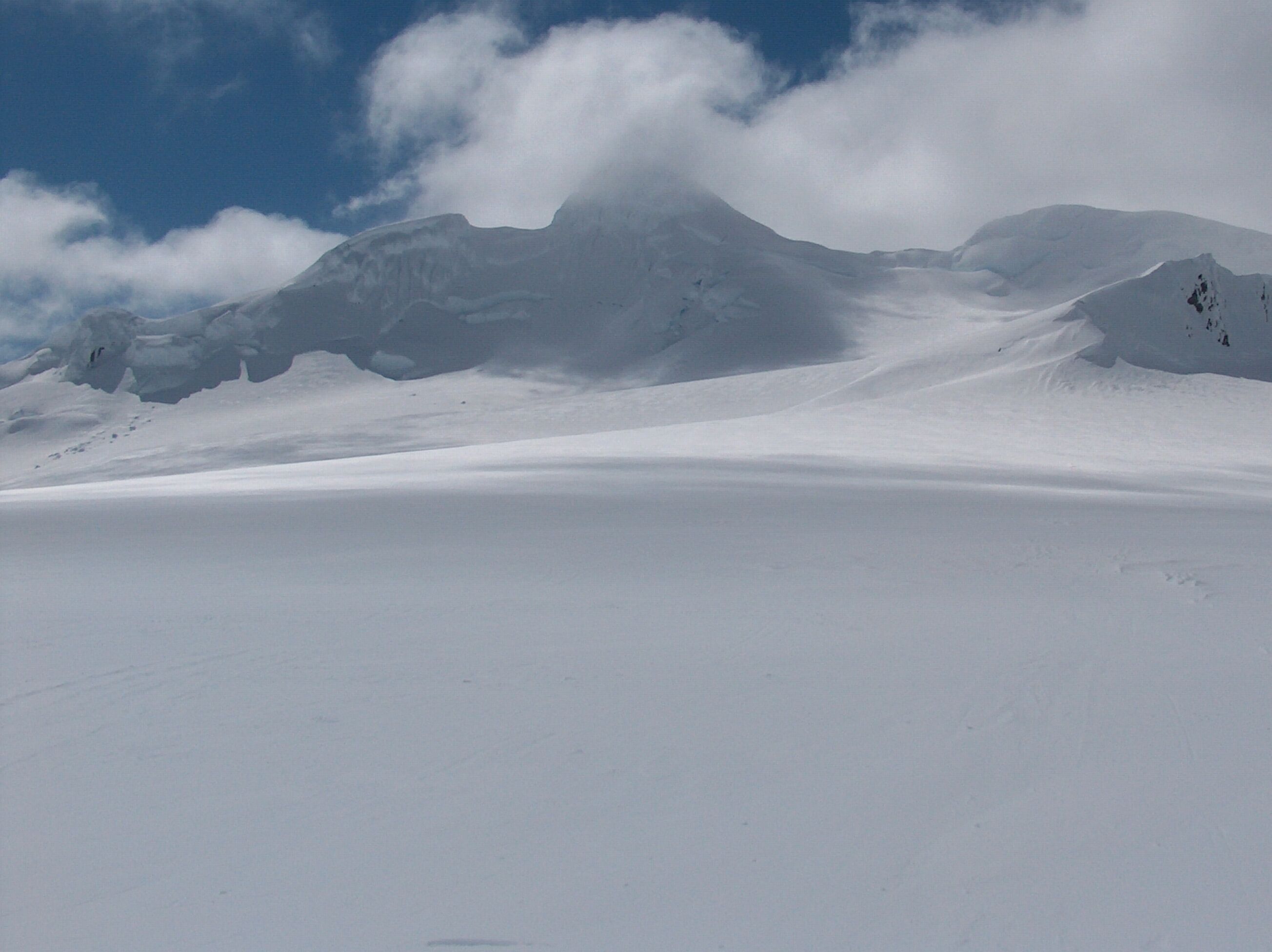|
Burdick South Peak
Burdick South Peak ( bg, връх южен Бърдик, vrah yuzhen Bardik, ) rises 544 m and is formed by an offshoot extending 1 km west-southwestwards from the southeastern extremity of Burdick Ridge in eastern Livingston Island. The peak is narrow, with steep and partly ice-free southern and northern slopes. It is linked to Willan Nunatak by Willan Saddle. The feature takes its name from Burdick Peak. Location The peak is located at which is 980 m south by west of Burdick Peak, 5.26 km east of Sinemorets Hill, 1.45 km northeast of Willan Nunatak and 1.49 km west-northwest of Pliska Peak Pliska Ridge ( bg, връх Плиска, vrah Pliska, ) is a three-peaked ridge rising to 667 m in eastern Livingston Island in the South Shetland Islands, Antarctica. Its central and highest summit, ''Pliska Peak'', is located 2.48 km eas .... The peak was mapped by the Spanish Servicio Geográfico del Ejército in 1991. Co-ordinates, elevation and distances ... [...More Info...] [...Related Items...] OR: [Wikipedia] [Google] [Baidu] |
Burdick Ridge
Burdick Ridge is a ridge rising to an elevation of on Livingston Island in the South Shetland Islands. Extending for between Orpheus Gate in the southeast and Rezen Saddle in the northwest, it is bounded by Perunika Glacier to the northeast and Balkan Snowfield to the southwest. It takes its name from its highest point, Burdick Peak Burdick Peak is the summit of Burdick Ridge rising to 773 m southwest of Mount Bowles on Livingston Island in the South Shetland Islands, Antarctica. It was named by the UK Antarctic Place-names Committee in 1958 for Christopher Burdick Christo .... It was first ascended by the Bulgarian Kuzman Tuhchiev from St. Kliment Ohridski Base during the 1993–94 season. Maps Isla Livingston: Península Hurd.Mapa topográfico de escala 1:25000. Madrid: Servicio Geográfico del Ejército, 1991. (Map reproduced on p. 16 of the linked work) * L.L. Ivanov et al. Antarctica: Livingston Island and Greenwich Island, South Shetland Islands. Scale 1:100000 ... [...More Info...] [...Related Items...] OR: [Wikipedia] [Google] [Baidu] |
Livingston Island
Livingston Island (Russian name ''Smolensk'', ) is an Antarctic island in the Southern Ocean, part of the South Shetlands Archipelago, a group of Antarctic islands north of the Antarctic Peninsula. It was the first land discovered south of 60° south latitude in 1819, a historic event that marked the end of a centuries-long pursuit of the mythical ''Terra Australis Incognita'' and the beginning of the exploration and utilization of real Antarctica. The name Livingston, although of unknown derivation, has been well established in international usage since the early 1820s. Geography Livingston Island is situated in West Antarctica northwest of Cape Roquemaurel on the Antarctic mainland, south-southeast of Cape Horn in South America, southeast of the Diego Ramírez Islands (the southernmost land of South America), due south of the Falkland Islands, southwest of South Georgia Islands, and from the South Pole.L. IvanovGeneral Geography and History of Livingston Island.In ... [...More Info...] [...Related Items...] OR: [Wikipedia] [Google] [Baidu] |
Willan Nunatak
Willan Nunatak is an ice-free tipped peak rising to 449 m on the glacial divide between Huntress Glacier and Balkan Snowfield on Hurd Peninsula in eastern Livingston Island in the South Shetland Islands, Antarctica. It is linked to Burdick South Peak to the northeast by Willan Saddle and, via Castillo Nunatak and Charrúa Gap, to Charrúa Ridge to the west. The nunatak is named after the British geologist Robert Charles Richard Willan (b. 1952) who has carried out field work in the area. Location The peak is located at which is 890 m east of Castillo Nunatak, 4.66 km east-southeast of Sinemorets Hill, 2.36 km south-southwest of Burdick Peak, 2.48 km west-southwest of Pliska Peak, 4.96 km west-northwest of Mount Friesland, 4.63 km north-northwest of Stambolov Crag and 3.21 km northeast of Napier Peak. British mapping in 1968, Spanish in 1991, and Bulgarian topographic survey in 1995/96 and mapping in 1996, 2005 and 2009. Maps South Shetland ... [...More Info...] [...Related Items...] OR: [Wikipedia] [Google] [Baidu] |
Willan Saddle
Willan Saddle (Sedlovina Willan \se-dlo-vi-'na 'wi-l&n\) is a flat, crescent-shaped and ice-covered saddle extending 1 km in the northeast–southwest direction between Burdick South Peak and Willan Nunatak in eastern Livingston Island in the South Shetland Islands, Antarctica. The saddle has an elevation of 400 m and is part of the overland route between Balkan Snowfield and Charrúa Gap in the west and Orpheus Gate in the east, thus providing access from the Bulgarian Base and the Spanish Base to the interior of eastern Livingston Island. The feature takes its name from the adjacent Willan Nunatak. Location The saddle's midpoint is located at (Mapped in detail by the Spanish Servicio Geográfico del Ejército in 1991, Bulgarian topographic surveys in 1995/96 and 2004/05, and mapping in 1996, 2005 and 2009). Maps South Shetland Islands.Scale 1:200000 topographic map. DOS 610 Sheet W 62 60. Tolworth, UK, 1968. Isla Livingston: Península Hurd.Mapa topográfico de esca ... [...More Info...] [...Related Items...] OR: [Wikipedia] [Google] [Baidu] |
Burdick Peak
Burdick Peak is the summit of Burdick Ridge rising to 773 m southwest of Mount Bowles on Livingston Island in the South Shetland Islands, Antarctica. It was named by the UK Antarctic Place-names Committee in 1958 for Christopher Burdick Christopher is the English version of a Europe-wide name derived from the Greek name Χριστόφορος (''Christophoros'' or '' Christoforos''). The constituent parts are Χριστός (''Christós''), "Christ" or "Anointed", and φέρει� ..., Master of the American schooner ''Huntress of Nantucket'', who visited the South Shetland Islands in 1820–21. Maps Isla Livingston: Península Hurd.Mapa topográfico de escala 1:25000. Madrid: Servicio Geográfico del Ejército, 1991. (Map reproduced on p. 16 of the linked work) * L.L. Ivanov et al. Antarctica: Livingston Island and Greenwich Island, South Shetland Islands. Scale 1:100000 topographic map. Sofia: Antarctic Place-names Commission of Bulgaria, 2005. * L.L. IvanovAntarctica: Livings ... [...More Info...] [...Related Items...] OR: [Wikipedia] [Google] [Baidu] |
Sinemorets Hill
Sinemorets Hill (Halm Sinemorets \'h&lm si-ne-'mo-rets\) is the second most prominent (after Hesperides Hill) in the chain of hills surmounting Bulgarian Beach in eastern Livingston Island in the South Shetland Islands, Antarctica. Sinemorets Hill is 380 m long in east-west direction and 230 m wide, with twin heights, the west-southwestern one being 64 m and the east-northeastern one 62 m, sheltering a small pool between them. It is snow free in the summer months and overlooks the Bulgarian base to the southwest. Relics of an old encampment were still discernible at its eastern slope in 1996. Sinemorets is the name of a village and a cape on the Black Sea coast. The hill was named by the United Kingdom Antarctic Place-Names Committee (UK-APC) in 1994 at the request of the Second Bulgarian Antarctic Expedition (1993/94). Location The peak is located at , which is 820 m east-northeast of Hespérides Point, 220 m inland from Greenpeace Rock, 1.2 km northwest of Krum Rock a ... [...More Info...] [...Related Items...] OR: [Wikipedia] [Google] [Baidu] |
Pliska Peak
Pliska Ridge ( bg, връх Плиска, vrah Pliska, ) is a three-peaked ridge rising to 667 m in eastern Livingston Island in the South Shetland Islands, Antarctica. Its central and highest summit, ''Pliska Peak'', is located 2.48 km east-northeast of Willan Nunatak (449 m), 1.81 km southeast of Burdick Peak (773 m, summit of Burdick Ridge), 3.53 km south-southwest of Mount Bowles, 3.68 km west-southwest of Kuzman Knoll, and 3.61 km northwest of Mount Friesland. The feature is 1.6 km long and 500 m wide, its axis trending due east-west, with precipitous southern slopes. It is ice-covered except for segments of its easternmost peak (646 m) and is bounded to the northwest by Orpheus Gate, to the north by the head of Perunika Glacier, to the east by Nesebar Gap, and to the south and west by the head of Huntress Glacier, the latter flowing 6 km southwestwards into False Bay. First ascent by the Bulgarian Lyubomir Ivanov (explorer), Lyubomir Ivano ... [...More Info...] [...Related Items...] OR: [Wikipedia] [Google] [Baidu] |
Composite Gazetteer Of Antarctica
The Composite Gazetteer of Antarctica (CGA) of the Scientific Committee on Antarctic Research (SCAR) is the authoritative international gazetteer containing all Antarctic toponyms published in national gazetteers, plus basic information about those names and the relevant geographical features. The Gazetteer includes also parts of the International Hydrographic Organization (IHO) General Bathymetric Chart of the Oceans (GEBCO) gazetteer for under-sea features situated south of 60° south latitude. , the overall content of the CGA amounts to 37,893 geographic names for 19,803 features including some 500 features with two or more entirely different names, contributed by the following sources: {, class="wikitable sortable" ! Country ! Names , - , United States , 13,192 , - , United Kingdom , 5,040 , - , Russia , 4,808 , - , New Zealand , 2,597 , - , Australia , 2,551 , - , Argentina , 2,545 , - , Chile , 1,866 , - , Norway , 1,706 , - , Bulgaria , 1,450 , - , Ge ... [...More Info...] [...Related Items...] OR: [Wikipedia] [Google] [Baidu] |






